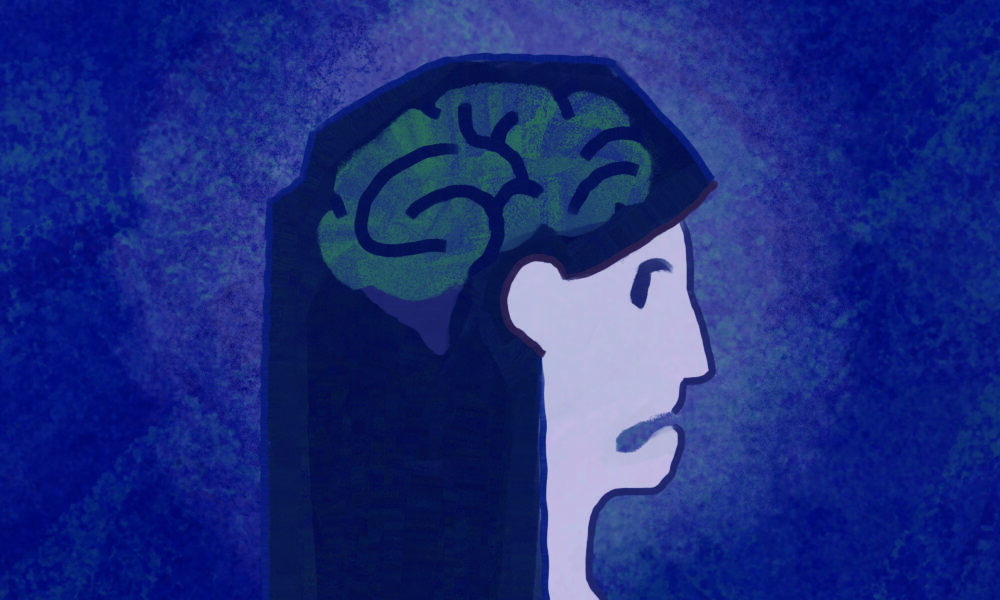The term ‘neuroplasticity’ never fails to incite intrigue. It involves structural and functional transformations within the brain as a way to adapt, often in response to interactions with the environment. Over the past decades, the concept of neuroplasticity has gained substantial traction in neuroscience, offering novel insights and opening up new possibilities.
Professor Robert Hess, Director of Research in McGill’s Department of Ophthalmology, recently published a paper in the Journal of Physiology investigating how the potential of exposure to darkness could impact neuroplasticity in adults.
Hess has dedicated his academic career to neuroplasticity, driven by his interest in amblyopia, a condition where the brain’s inability to adequately process input from one eye causes it to favour the other. The main cause of amblyopia does not lie within the eye itself but instead resides in the brain’s visual cortex.
“[W]e can recover [visual] function because the hardware hasn’t been lost; it’s just that the software needs to be changed,” Hess said in an interview with The Tribune.
This notion of ‘software’ change is at the heart of neuroplasticity: An idea that Hess and his colleagues pursued in 2011 in their efforts to treat amblyopia in young children. They created innovative therapies, including movie and video game interventions developed in collaboration with the gaming giant Ubisoft to remarkably improve eye coordination and vision.
In his new study, Hess investigated the impact of a 60-minute period of complete darkness on neuron activity and visual plasticity in the adult human cortex in both normal-sighted and amblyopic adults. In the brain, the transmission of information occurs through the firing of neurons as they communicate with one another. To successfully fire, the cell must be depolarized by excitatory stimuli, while the cell becomes hyperpolarized from inhibitory stimuli, leading to decreased activity of communication.
“Previously, people had shown that this works only in juvenile animals [like] kittens, and mountain primates too, but to my knowledge, not in adults,” Hess said.
He explained that past research, which demonstrated improvement of visual function in kittens following ten days of complete darkness, partially inspired his recent study. However, it is believed that neuroplasticity is most effective during critical periods—developmental periods that end when an organism reaches adulthood.
“So this is where this sort of metaplasticity comes in: There is a degree of plasticity that is over, and you can’t reactivate it, but you can modulate it. You can extend it a bit,” Hess said.
Following the 60-minute dark exposure, the researchers measured the excitatory and inhibitory balance in the primary visual cortex using magnetic resonance spectroscopy (MRS). They found that this period of dark exposure strengthened the local excitability in the primary visual cortex and boosted visual plasticity in normal-sighted adults only, while in amblyopic adults, plasticity remained unaffected.
Interestingly, the researchers concluded that the amount of brain chemicals called ‘excitatory neurotransmitters’ did not have a strong correlation with enhanced plasticity. Instead of chemical quantity, what mattered was how much these chemicals changed, suggesting that the physiological basis of plasticity in humans is more complex than the relationship of cortical excitation and inhibition.
“This is a first attempt in an area that is developing and that we know so little about, but could be important,” Hess said.
Hess encourages everyone to have the “confidence to ask the questions that you might think shouldn’t be asked,” firmly believing that “there is no such thing as a stupid question.”
His lab is always seeking participants for ongoing research experiments. With unwavering enthusiasm, he anticipates that this involvement will shed more light on the adaptability of the human brain at any age and contribute to the discovery of more effective treatments for disorders such as amblyopia.








